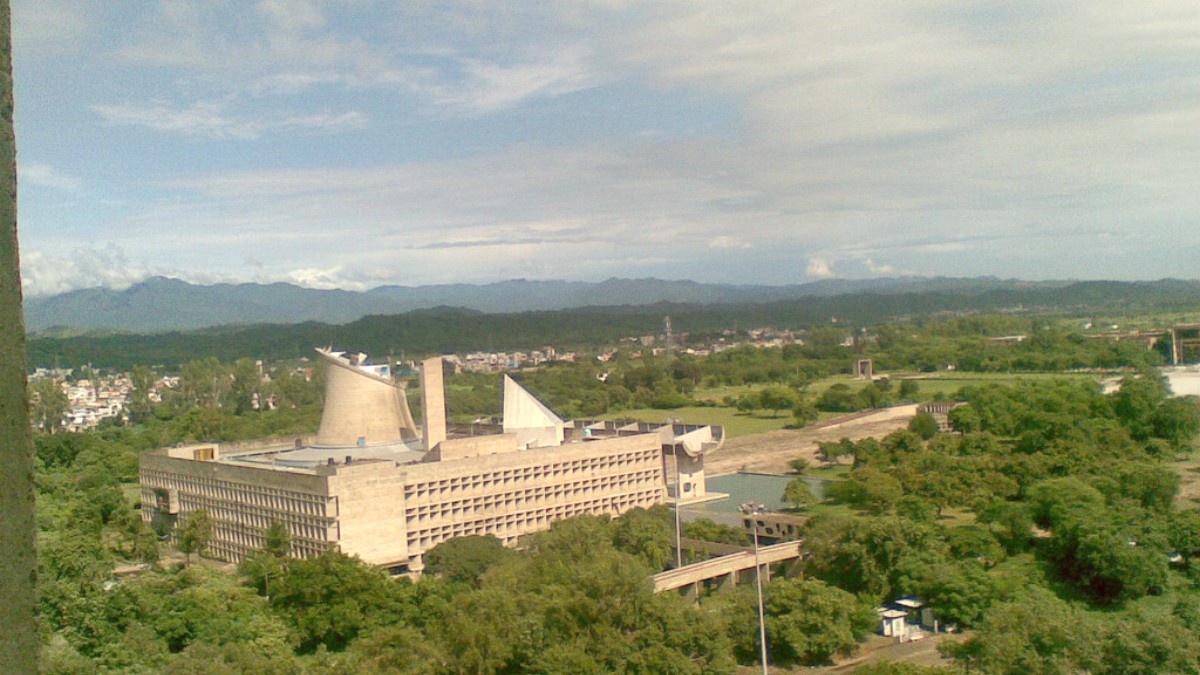
Punjab And Haryana, India
The terrain mainly consists of fertile alluvial plains. This flat, productive land supports extensive wheat, rice, and sugarcane cultivation. This agricultural backbone supports the local economy and influences the regional diet. While generally flat, the state's northeastern edge touches the Shivalik Hills, marking the beginning of the Himalayan range. This geological transition presents minor elevation changes and different ecosystems compared to the expansive plains. Rivers and an extensive canal system irrigate the fields, making the land highly productive. This network of waterways influences local life, transportation patterns, and agricultural practices.
Punjab, a state steeped in history and culture, welcomes travelers with its rich traditions and spirited locals. Known as the "Land of Five Rivers," Punjab offers an unique blend of spiritual experiences, historical landmarks, and a celebrated culinary scene.
This guide details essential information for a rewarding journey, covering what to expect, planning considerations, and practical advice to help you explore this captivating region.
Punjab balances its rich past with modern development, embodying a powerful spirit of endurance and pride. The state's fertile plains, nourished by its historic rivers, form its agricultural heartland, influencing its cuisine and lifestyle.
Punjab offers a compelling journey for travelers interested in spirituality, history, and authentic cultural experiences. Prepare to immerse yourself in a land where tradition meets modernity, creating an experience unlike any other.
Chandigarh (shared with Haryana)
Ludhiana
Punjabi
Sikhism
Indian Rupee (INR)
The state experiences a continental climate with hot summers, cool winters, and monsoon rains. The calling code for India, including Punjab, is +91.
Golden Temple (Amritsar), Jallianwala Bagh (Amritsar), Wagah-Attari Border, Virasat-e-Khalsa (Anandpur Sahib).
Rich, dairy-based, hearty vegetarian and non-vegetarian dishes. Examples: Butter Chicken, Sarson da Saag, Amritsari Kulcha.
The state's Time Zone aligns with Indian Standard Time (IST), UTC+5:30.
Punjab experiences distinct seasons throughout the year, each offering a different travel experience.
Consider specific weather events that can impact your trip to Punjab.
Most pleasant weather for sightseeing and outdoor activities. Clear skies and comfortable temperatures.
Fewer crowds and potentially lower prices for hotels and flights. September offers lush green landscapes.
Significantly lower prices. Extreme heat defines May and June, with high humidity and heavy rainfall during July and August.
Punjab has a continental climate, marked by extreme variations in temperature across its seasons.
Plan your visa and entry well in advance to avoid last-minute issues. India offers various visa options. Most international travelers will use an e-Visa or a regular visa.
e-Visa is available for citizens of over 170 countries, including the United States, United Kingdom, Canada, Australia, and most European Union countries. This option covers e-Tourist, e-Business, e-Medical, and e-Conference Visas. The entire application process happens online at the Official Indian Visa Online website. Upload a recent passport photo and a scanned copy of your passport bio-page, then pay the required fee online. You receive an Electronic Travel Authorization (ETA) via email. Print this ETA and carry it with you during your travel to India. Consider consumer visa services like IVisa or VisaHQ for assistance.
For a regular visa, if your nationality is not eligible for an e-Visa or if your travel purpose is not covered by an e-Visa (e.g., long-term study, employment), apply through VFS Global or directly at an Indian embassy or consulate in your home country. This process typically involves submitting a physical application and attending an interview.
E-Visa fees vary by nationality and visa type, ranging from approximately $10 to $100 USD. Payment occurs online during the application. Upon arrival at a designated airport (like Sri Guru Ram Dass Jee International Airport in Amritsar), present your printed ETA or physical visa along with your passport. Immigration officials collect biometrics, including fingerprints and a facial scan. The process is straightforward, though waiting times exist.
For general tourism in Punjab, special permits are not required. Restricted Area Permits are for specific regions in India not including Punjab for standard tourist visits.
The official currency of India is the Indian Rupee (INR), with coins in 1, 2, 5, and 10 rupees, and banknotes in 10, 20, 50, 100, 200, 500, and 2000 rupees. Exchange foreign currency at international airports, major banks, and authorized money changers in cities. ATMs are widely available in urban areas, offering good exchange rates. Most major credit cards (Visa, MasterCard, Amex) accept at larger hotels, restaurants, and modern shops. Smaller establishments and street vendors typically prefer cash.
Tipping is not compulsory but is a common practice and is appreciated for good service. In restaurants, a tip of 5-10% of the bill is customary, especially in mid-range to fine dining. For smaller eateries, rounding up the bill or leaving a small amount is common. For bellhops or housekeeping, INR 50-100 for specific services or at the end of your stay. Drivers (taxis/tour drivers) receive INR 100-300 per day for good service. Tour guides receive INR 100-500 per tour, depending on duration and quality. Porters receive INR 20-50 per bag at airports or railway stations.
INR 900 - 2,700 (USD 11-33)
INR 4,000 - 8,200 (USD 48-100)
INR 12,000 - 30,000+ (USD 145-360+)
Accommodations (per night): 300-20,000+ INR. Meals (per person): 50-3,000+ INR. Transportation (per ride/short): 10-1,500 INR. Attractions: 0-1,000 INR.
Eat local street food and dhabas. Public transport. Consider dharmashalas. Polite bargaining in markets.
This table provides a quick reference for common expenses.
Hostels/Dharamshalas: 300 - 800. Budget Hotels/Guesthouses: 1,000 - 2,500. Mid-range Hotels: 2,500 - 5,000. Luxury Hotels/Heritage Properties: 8,000 - 20,000+.
Street Food/Dhaba (per dish): 50 - 200. Local Restaurant: 200 - 500. Mid-range Restaurant: 500 - 1,000. Fine Dining: 1,500 - 3,000+.
Transportation (per ride/short distance) and Attractions (Foreign National Prices) are generally modest, with many religious sites being free to enter.